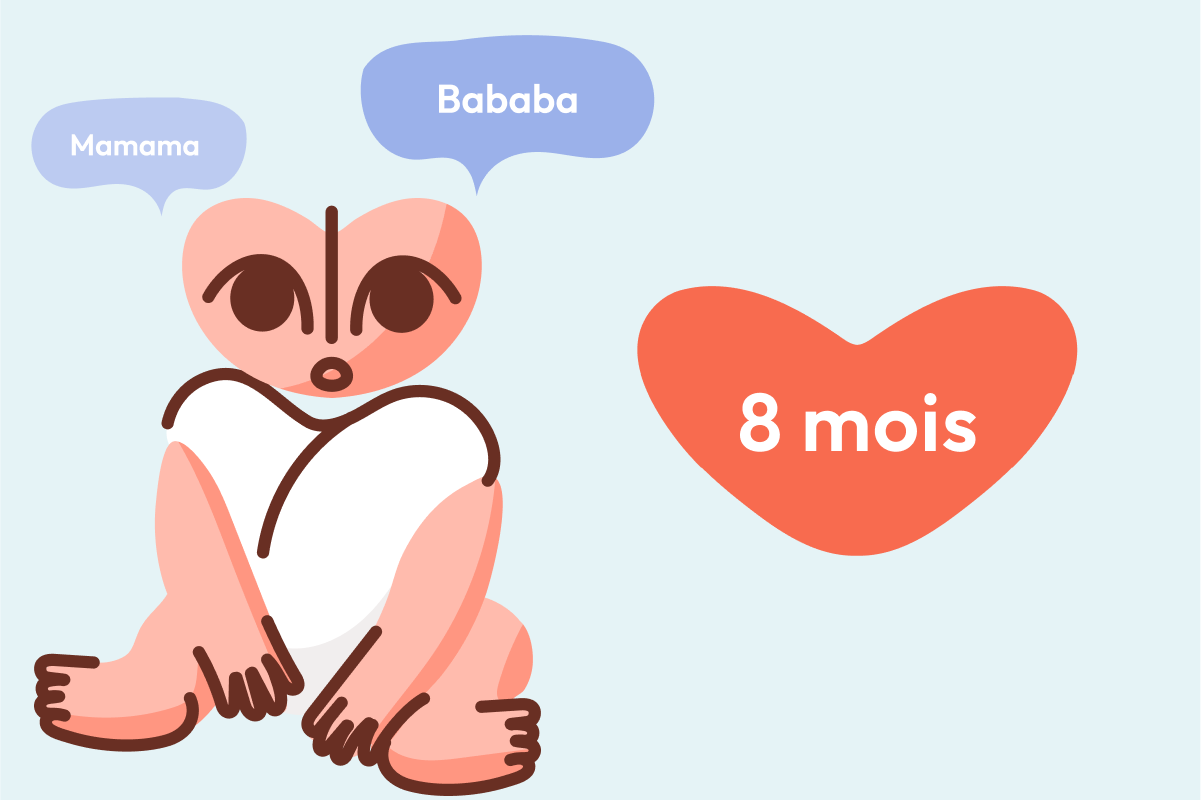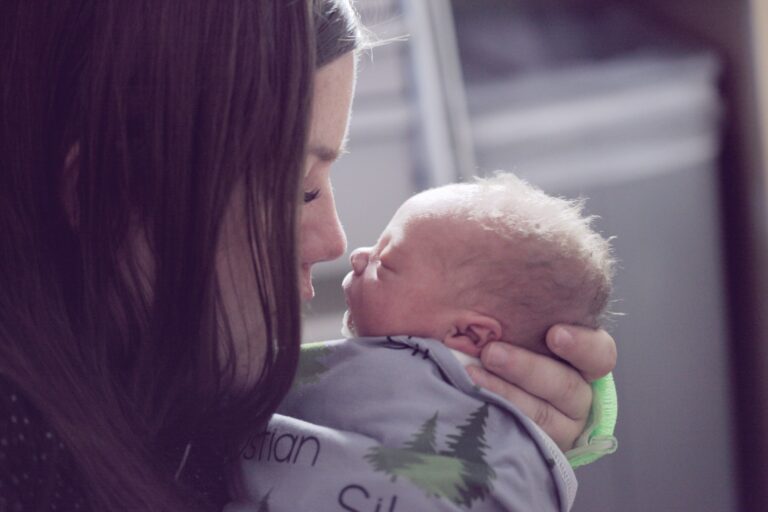Wondering what truly sets the life of an 8 month old baby apart? The journey at this age is a whirlwind—days punctuated by leaps in movement, experimenting with new tastes, and sometimes nights of broken sleep that leave everyone yawning by sunrise. Parents find themselves oscillating between awe as their baby pulls upright, anxiety about every new sound or rash, and joy over a clapped hand or babbled “dada.” Why do some babies crawl like wind-up toys, while others watch the world serenely from their playmat? Is that persistent refusal of peas simply a phase—or a warning from a tiny food critic? And how do you balance the need for safe exploration with the ever-present fear of choked grapes or fever? Let’s unravel, calmly but thoroughly, the daily realities, uncertainties, and health essentials of an 8 month old baby—blending expert advice with warmth and precision, always centering science and well-being.
8 Month Old Baby Development: Movement, Curiosity, and Growth
What Changes at 8 Months? A Surge of New Abilities
At eight months, many babies demonstrate a palpable sense of agency. One day, they wobble, the next—stability as they sit upright without support, sometimes shifting in gleeful bursts between rolling and exploring every crevice of the living room rug. Crawling might suddenly dominate your days, or perhaps there’s just that tentative rocking on all fours. Pulling up on furniture? This movement not only strengthens core and leg muscles but prefaces the thrilling adventure of standing and walking.
Yet, variation reigns: some 8 month old babies appear content observing, honing hand-eye coordination and the grasp reflex rather than dashing toward the nearest object. Medical professionals emphasize: diverse developmental timetables are expected and healthy. The focus should stay on providing a safe environment with ample room to practice these skills, whether speed demon or steady sitter.
Growth, Weight, and Body Changes
For most 8 month old babies, weighing anywhere from 16 to 22 pounds (7.3–10 kg) and stretching up to 30 inches (76 cm) tall is typical. Pediatric growth charts steer anxiety away from misplaced comparison—they map each baby’s trajectory rather than rigid standards. Notice slowing weight gain as mobility increases? Often, calories go into building muscle and fueling busy brains rather than the scale. Keep routines consistent: regular feeds, predictable naps, and daily play soothe both growing babies and their caregivers’ nerves.
Physical, Cognitive, and Emotional Advancements
Gross Motor Triumphs and That Famous Pincer Grasp
Gross and fine motor skills bloom side by side. At this stage, some babies enthusiastically attempt to crawl, while others may scoot on their bottoms, roll energetically, or suddenly favor pulling up. Should worry start bubbling over slow progress? Pediatricians reassure: significant variation is evidence of individuality, not deficiency.
In the hands, a transformation. The pincer grasp—where thumb and forefinger unite with precision—emerges. Toys, bits of food, or that everlasting fascination with keys all become tools for exploration. Each repetition hones not just dexterity but also independent problem-solving, a preview of the assertiveness to come.
Cognitive Expansion: Object Permanence and Anticipation
Ever noticed your 8 month old baby searching for a dropped toy, eyes darting beneath the blanket? This is object permanence—the understanding that something exists, even when out of sight. Games like peek-a-boo shift from simple amusement to serious neurological exercise.
Routines become meaningful. Anticipation sharpens: the sight of a bottle foreshadows comfort; a certain song might mean it’s time for sleep. These associations scaffold learning, but can also usher in frustration—for example, when favorite routines are interrupted.
Language, Babble, and Emotional Nuances
Babbling—those complex, melodic streams of sound—explodes at eight months. Some utter “mama” or “dada” indiscriminately, others mimic claps or wave delightedly. Responding to names becomes more evident, and babies often show keen interest when adults alter tone or facial expression. Consistently narrating daily life, reading simple books, or singing nursery rhymes stimulates neural connections vital for both language and social development.
Emotionally, separation anxiety may surface, especially during bedtime or whenever a parent slips from view. Expressions of joy, surprise, and even fear become more pronounced. Pediatric research explains: this reflects a growing self-awareness, not regression, and it signals attachment development—a healthy, if sometimes exhausting, milestone.
Play, Stimulation, and Setting Up a Supportive Environment
Daily Rhythms: Naps, Meals, and Freedom to Explore
A typical day for an 8 month old baby involves two to three naps, interspersed with meals and energetic play. Structure—but not rigidity—provides comfort. A flexible rhythm helps babies anticipate transitions (nap, meal, play), fostering calm rather than chaos.
Stimulating Activities and Toy Selection
Simple toys shine: stacking cups, balls, fabric books, and textured objects captivate the senses. Hiding-and-seeking items beneath cloths not only entertain but reinforce the brain’s grasp of object permanence. During bath time, splashing and grasping at safe floating toys add sensory richness.
To boost mobility, place favorite toys just beyond reach, encouraging crawling or creative movement. Peer-reviewed studies highlight movement-based play as foundational to muscle and cognitive growth. Don’t discount the classic cardboard box—sometimes, unstructured play yields the most discovery.
Language, Books, and Interaction
Daily reading does more than introduce words: it nurtures emotional security and reinforces social cues through tone, rhythm, and facial expressions. Taking turns in games like rolling a ball or clapping hands teaches patience and social responsiveness. Clarity and gentleness in speech help scaffold emerging language skills even before first real words take hold.
Health Essentials and Pediatric Care
Common Health Issues: What to Watch For
Ear infections frequently arise at this age, particularly following upper respiratory tract viral episodes. Symptoms might include tugging at the ear, irritability, or low-grade fever. Early intervention—guided by clinical consensus—suggests seeking prompt pediatric evaluation rather than adopting a wait-and-see approach, especially with persistent discomfort or fever.
Digestive woes, such as constipation or mild gastroesophageal reflux, often accompany the transition to solid foods. If a baby seems uncomfortable, gentle tummy massages and fiber-rich pureed foods (think prunes or pears) can help. Increased water intake with meals supports healthy digestion, but breast milk or formula must remain the hydration anchor.
Safety and Baby-Proofing: Proactive Basics
Mobility demands vigilance—outlet covers, cabinet locks, stair gates, and anchoring heavy furniture are all part of creating a safe environment. Keep small objects, sharp items, and choking hazards out of reach. Experts consistently emphasize supervised exploration, noting that a child’s abilities often outpace parental expectations.
Proper toy selection also matters: avoid items small enough to fit through a toilet paper tube. Regularly check toys for wear, and immediately remove anything with loose or broken pieces.
Car Seats, High Chairs, and Travel Safety
Updated guidelines underscore the necessity of using a rear-facing car seat for every ride, regardless of distance. Daily use demands proper harnessing—never loosened straps or unattended moments. In high chairs, always fasten safety harnesses and keep the surrounding area free of items that could cause tipping or choking.
Teething: Recognizing and Soothing Discomfort
Drooling, gum-rubbing, disrupted sleep—teething brings physical signs and sometimes behavioral shifts. Cold (but not frozen) teething rings can offer relief, while gentle gum massages might ease irritability. For persistent pain, consult your pediatrician about safe interventions, but avoid topical gels containing benzocaine due to risks of methemoglobinemia.
Feeding and Nutrition: Solid Foods, Patterns, and Pitfalls
Milk, Fluid Needs, and the Role of Solids
Whether breastfed or formula-fed, an 8 month old baby typically needs between 24–32 ounces daily. Feeding every three to four hours accommodates both hunger cues and developing independence. Solids now supplement, not replace, primary milk feeds.
Solid Food Progression: Building a Wholesome Plate
Offer solids three to four times a day, always centered on iron-rich foods—pureed meats, beans, or fortified cereals safeguard against iron deficiency anemia, a well-documented risk after six months. Introduce soft, manageable finger foods: ripe avocado, banana chunks, soft-cooked carrot sticks, or scrambled egg. Proteins like shredded chicken or mashed beans bolster muscle and brain development.
For vegetarian families, plant-based proteins (lentils, chickpeas, tofu) can meet protein requirements, but medical consultation ensures balanced nutrition and sufficient iron, zinc, and B12 intake.
Sample Feeding Day
- Breakfast: Iron-fortified cereal with mashed fruit.
- Mid-morning: Breast milk or formula.
- Lunch: Pureed vegetables, beans, or soft protein.
- Afternoon: Breast milk or formula.
- Dinner: Diced vegetables, small soft pasta, cheese.
- Bedtime: Breast milk or formula.
Routine matters—consistency gives babies a sense of safety and supports appetite regulation.
Safe Eating Practices and Choking Avoidance
Always provide soft, easily mashable foods, and cut everything into small pieces. Avoid classics like whole grapes, nuts, raw carrots, or hot dog slices; these are among the top choking risks highlighted by pediatric data. Supervise all meals—distraction-free eating reduces accidents.
Food Refusals: Picky Now or Later?
Texture and taste rejection is nearly universal. Avoid pressure; instead, offer new foods multiple times and celebrate exploratory play (touching, squishing, tasting). Research consistently shows repeated exposure—often 8–15 times—is key to acceptance.
Introduce one new food at a time, waiting two to three days for signs of allergy (rash, swelling, vomiting, or wheezing require immediate medical care). Family history or previous reactions warrant pediatric consult before further introduction.
Hydration: When Is Water Appropriate?
Though primary fluid needs are met by milk, small amounts of water (up to 4 ounces daily) can be offered with meals. Excessive water isn’t appropriate and can disrupt electrolyte balance—a little goes a long way.
Sleep Patterns, Routines, and Dealing With Disruption
Typical Sleep Structure and Amount
Expect 12–14 hours total, typically split between overnight sleep and two daytime naps of one to two hours. Like everything else with an 8 month old baby, diversity abounds—some sleep through; others wake frequently, especially if new skills, teething, or separation anxiety disrupt established habits.
Constructing a Calming Bedtime Routine
A soothing bath, lullabies, and a short story create predictable pre-sleep cues. Medical consensus is firm: always lay your baby on their back on a firm crib mattress, free from pillows, heavy blankets, or toys—a cornerstone against sudden unexpected infant death.
Coping With Sleep Challenges and Regressions
Sleep regression—frequent night waking or resistance to bedtime—occurs for many at this age, driven by both physical and cognitive leaps. Reassuring your baby with gentle consistency—returning to the routine, offering calm words, or leaving a familiar blanket—reinforces security.
Structuring the Day: Confidence, Independence, and Play
Safe Exploration and Daily Setup
A baby-proofed environment allows crawling, pulling up, and curiosity without constant intervention. Age-appropriate toys and organized play areas foster both independence and safety.
Building Resilience and Independence
Encouragement is fuel: allow your baby to try new movements, foods, and self-feeding. Stay close, offer reassurance as needed, and celebrate effort rather than outcome. This foundation of emotional security supports future autonomy.
Predictability: Meals, Sleep, and Activity
Regular scheduling—meals, naps, and play at roughly the same times—anchors the day, providing comfort amid developmental turbulence. Predictability helps babies regulate mood and transitions.
Outings, Travel, and Practical Preparation
Packing Essentials for a Smooth Day Out
To leave the house with an 8 month old baby is to anticipate: car seat, stroller, packed diaper bag, snacks, water, extra clothing, wipes, and a favorite comfort item. Planning feeds or naps strategically around travel times often spells the difference between peaceful adventure and meltdowns.
Safety During Outings
Always keep infant safety at the forefront—secure babies in carriers or strollers, avoid high-traffic or hazardous spaces, and use hand sanitizer liberally. Never leave your child unattended, and allow time for breaks, stretching, and play.
Parental Well-being: Self-Care Without Guilt
Navigating Stress and Fatigue
Caring for an 8 month old baby is joyful but often draining. Rest and support are not luxury—they are necessary for sustained care. Seek help when needed; small breaks, even a cup of tea or a short walk, rejuvenate caregivers and ultimately benefit baby too.
Community and Progress
Connect with others—friends, family, or support groups—to share both burdens and milestones. Celebrate every achievement, however modest; each is evidence of attentive, personalized care.
Key Takeaways
- An 8 month old baby achieves remarkable growth—mobility, new foods, burst of curiosity—but every child’s path is unique. Be patient, provide opportunities, and consult professionals if worried about development.
- Early and safe exploration, backed by thorough baby-proofing, prepares your child for independence while keeping risks in check.
- Balanced nutrition and feeding routines, emphasizing iron-rich foods and smart introductions of solids, protect against common health issues like anemia and choking.
- Sleep structures depend on predictable cues, consistency, and ensuring a secure, safe environment—accept that disruptions are normal around new motor skills or teething.
- Emotional leaps, such as separation anxiety, are expected and benefit from steady, reassuring rituals.
- Parental well-being deserves attention—recharging is essential for ongoing support and joy in parenting.
- For further personalized guidance, free health questionnaires, and age-specific tips, download the Heloa app—a valuable companion in nurturing both your baby and your confidence as a parent.
Questions Parents Ask
What can I do if my 8 month old isn’t crawling yet?
First, it’s reassuring to remember that every baby develops at their own pace. Some little ones take their time before they start crawling, or they might find other creative ways to move, like rolling or scooting on their bottom. If your baby is showing interest in their surroundings and working on new movements—reaching for toys, pushing up during tummy time, or pivoting around—it’s usually a sign things are progressing well. You can encourage motor development by offering plenty of supervised floor play, using toys to motivate movement, and ensuring your home environment is safe for exploration. If, however, you have any concerns or notice delays in other areas like sitting or using their hands, don’t hesitate to reach out to your pediatrician—they’re there to support both you and your baby with individual advice.
Should my 8 month old have teeth already?
There is a wide range of normal when it comes to teething. Some babies get their first teeth as early as 4 months, while others might not see a single tooth until after their first birthday. The arrival (or absence) of teeth at 8 months is perfectly normal, so pas d’inquiétude if your baby’s gums are still toothless for the moment. If your child seems irritated by sore gums, offering a cold (but not frozen) teether can bring comfort. And remember, the timing of teething doesn’t affect future dental health—every baby follows their own unique timeline!
How much water can I safely offer my 8 month old?
At 8 months, most of your baby’s hydration needs are still met by breast milk or formula. However, you can start to offer small amounts of water—usually up to about 4 ounces (roughly 120 ml) per day, especially with meals. This helps introduce the habit of drinking from a cup and supports digestion with solid foods. It’s important not to give large quantities of water, as babies at this age are not ready for higher volumes and their kidneys are still developing. If you have doubts about the right amount for your baby, your healthcare provider can offer personalized advice.

Further reading:









